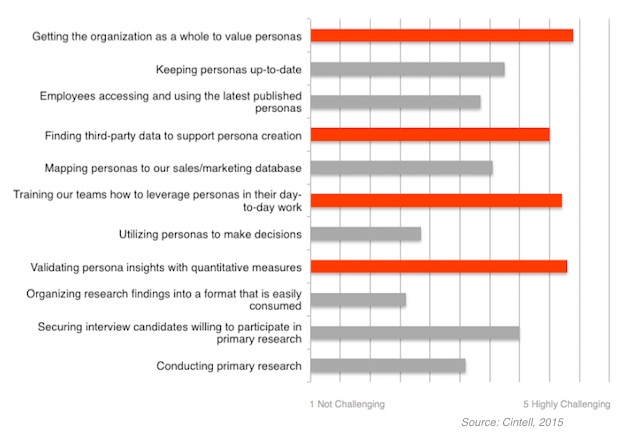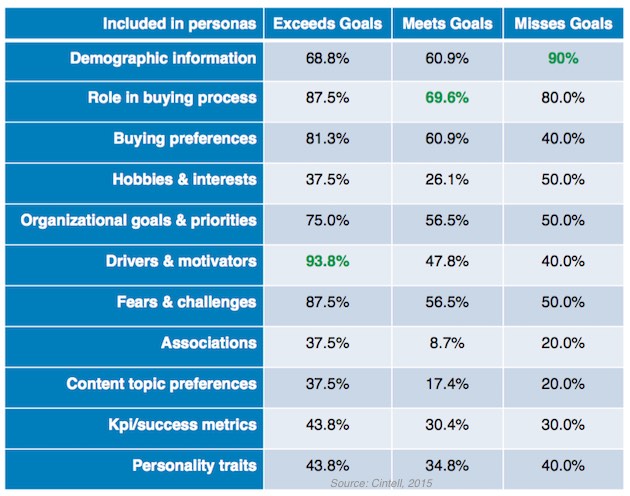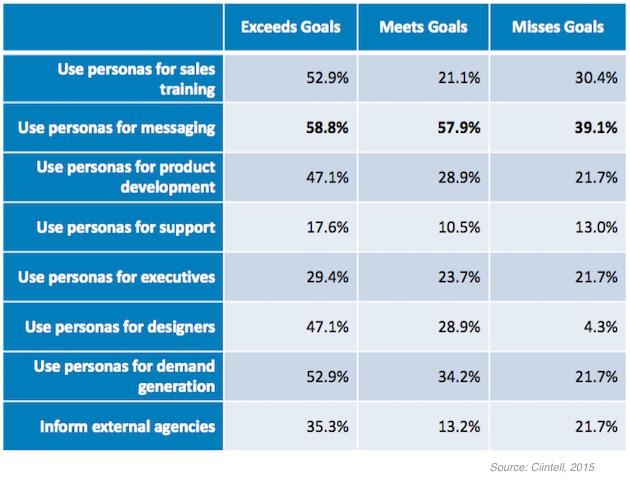B2B marketers tend to agree that most employees in their organization cannot name the company's buyer personas and don't know the key attributes of those personas, according to a recent report from Cintell, MarketingProfs, and five other partners.
The report was based on data from a survey conducted in November 2015 of 137 North American business and marketing executives. Organizations were grouped into self-reported groups: those exceeding annual revenue goals, meeting revenue goals, and missing revenue goals.
Only 29% of survey respondents say at least half their organization can describe the buyer personas that have been developed; just 8% think at least three-quarters of their organization can do so.
Below, additional key findings from the report.
Challenges
Respondents say the top challenges they face with buyer personas are getting the organization to value personas, validating persona insights with qualitative measurement, training teams to use personas in their day-to-day work, and finding third-party data to support persona creation.

Tactics Used for Creation
B2B organizations that exceed annual revenue goals are more likely than worse-performing organizations to use a wide range of sources to develop buyer personas, including interviews, surveys, and competitive analyses.

Elements Included in Personas
Organizations that exceed annual revenue goals are more likely to create detailed personas that outline buyers' motivators/fears and their roles in the purchase process; worse-performing organizations are more likely to use demographic data in their buyer personas.

Using Personas
The most common use of buyer personas is to help develop marketing materials.
Only 13% of respondents report using personas to train customer service/support teams to improve interactions with clients.

About the researchers: The report was based on data from a survey conducted in November 2015 of 137 North American business and marketing executives. Organizations were grouped into self-reported groups: those exceeding annual revenue goals, meeting revenue goals, and missing revenue goals.




